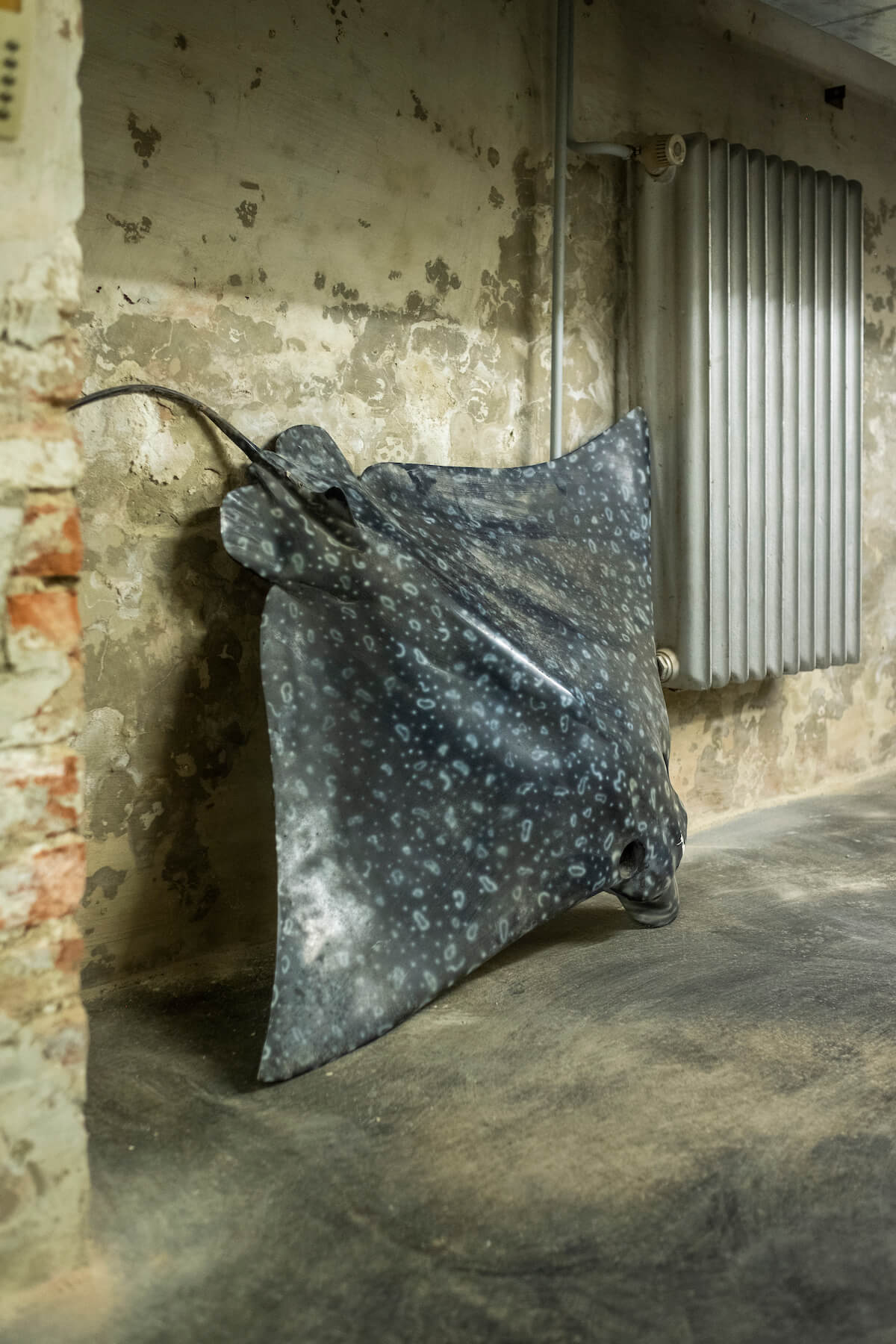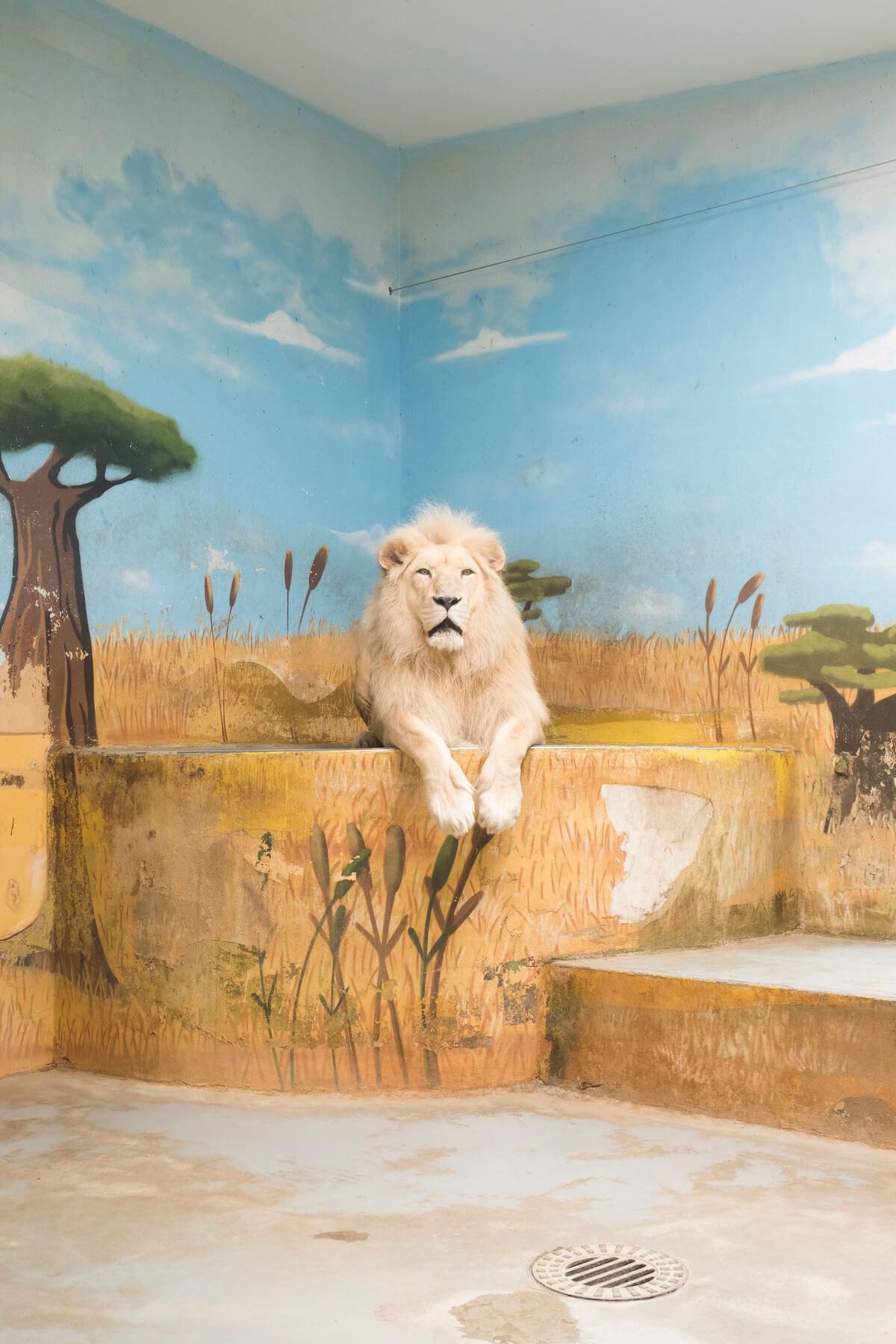INTERVIEW
Between the Preservation of Life and the Celebration of Death
WITH ELISA CAPPELLARI
An interview with Elisa Cappellari
“I encounter creatures and I try to undo the hierarchical power between me and them. I shift myself from being the photographer, the hunter, the observer to become the hunted, the observed or the framed.”
Elisa Cappellari won our Animal Kingdom competition with an arresting image of an elephant in the taxidermy department of a museum, for which judge Simen Johan praised the “metaphor of the package wrap as bandage, evoking the fragile state of elephants in the wild”. Keen to know more, we asked Elisa about the image and circumstances behind it, along with her broader photographic background and approach. Her answers were thoughtful and illuminating, covering her academic approach to image making and how her interest in the duality between the domestic and the wild is rooted in her own personal history…
Elisa, congratulations on winning our Animal Kingdom competition. What did you make judge Simen Johan’s comments?
I believe it is a fair comment, not too loaded, not too detailed, as my image is. In reality I didn’t want to present a metaphor, specifically, with this image, even though what I usually photograph goes in that direction. I have to say that I reacted more to another comment, if possible I would like to mention it here: “This is why I believe that a photo of something extraordinarily isn’t necessarily an extraordinary photo”. It is a great critique that I will keep in mind and this is exactly the reason why I applied to the contest with this picture – not because it is an extraordinary photograph but because it was an extraordinary moment that moved me a lot and that I share in all its simplicity.
Can you tell us a little bit more about the image, the circumstances behind it, and the story you wanted to tell?
Almost two years ago I was in the Natural History Museum of Wien for a period of personal photographic research. It should have been a two-month period of work but the Covid-19 pandemic quickly switched me off, as it did to all the others. In that time frame I wanted to discover how the taxidermy department of a museum would have looked, so I knocked at its doors. I found animals in between the preservation of life and the celebration of death. Ongoing keywords and questions looping in my mind where “Nature – Unnatural – Original nature”. In this context I met the elephant ‘under treatment’, a moment that made me realize about the fact that nature was just gone and returned as an object of itself. The photograph talks about something being objectified and exposed, a nature that suffers, is fragile and vulnerable. It also talks about the beauty of nature which, indeed, we want to preserve, represent and multiply in its forms. This action, however, shows the presence of power roles and hierarchy between us and nature, difficult to often avoid or limit. But having said all that, as always and everything I photograph, I like my images to bring small questions to the viewer: Look at a baby elephant stuffed in a room, what do you see? The right answer lies in your individuality and shared visual knowledge.
And tell us about the larger body of work…
The image is part of other images shot in the same context but it also connects with an ongoing observation of the animal aesthetic in different urban spaces. It’s not a finished body of work yet or, better to say, it can grow as much as I feel the adrenaline when diving into the museum space and looking for a closure statement for all I see. I like to observe animals, whatever form or context they are in. Looking at an animal makes me nervous and incredibly calm at the same time. To photograph them is to me like a sort of perversion and a need for closeness, possession and redemption of their nature. This mixture of feelings is what pushes me to keep going on in a visual hunt where I encounter creatures and I try to undo the hierarchical power between me and them. I shift myself from being the photographer, the hunter, the observer to become the hunted, the observed or the framed. At least I try. When it works I really feel I am building up a story together with my subjects, when it doesn’t I simply know that I am documenting them.

ELISA’S WINNING IMAGE FOR ANIMAL KINGDOM



Tell us a little about yourself, and your route into photography…
I am 28 years old and I live with my family in the countryside of northern Italy. I was born in Brazil and arrived in Italy quite young to perceive it – as adopted at two months old. As with many others, I started photography because I found old cameras in my house. I believe my research started soon after I realized that I was not photographing for fun but for an act of comfort-search towards what I was framing: at that time tufts of grass. I have always looked for familiarity towards what I photograph, this means to reach the point where to feel part of something, therefore to recognize. To me it happens always while shooting animal subjects, it is a sensation of entering a space that I already know and that as such, talks about me as well. This space is made of simple universal feelings such as fear, joy, suffer, happiness, tension, doubt, energy that come to be activated depending on the context and the moment in which the subject is present. A tiger in a cage differs from a cow in a farm, or a lizard on a street, or a pigeon on a rooftop…
In the beginning I didn’t know how to create a body of work, a project, a story. So, the camera was to me just an object to understand why my focus was leading me towards certain views. From the nature under my feet I shifted on to the ones living on it. The desire for transformation, play and empathy towards the animal kingdom is, indeed, a constant in my work nowadays, and it derives from those who gave me the opportunity to constantly remind myself about the presence of two realms, Europe and South America, reality and imagination, wild and domestic. This pushes me to photograph with an inner need of merging different natures or, if possible, canceling the distance between them or between me and them.
On your website you say that the focus of your work is on hybridism and the coexistence of the wild and domestic in society. There are some interesting ideas there, that are well captured in your winning image. Can you tell us a bit more about this interest, and where it stems from?
During my four-years study at a Dutch academy (KABK Royal Academy of Arts in The Hague) I took time to dive into certain deep questions trying to give them a vision through my photographs. They ask about power roles, about a definition for nature, about the possibility of a coexistence between two individuals, about the space of freedom, about the role of domestication and wildness in society and about a possibility of intimacy between strangers. At first sight, what I shoot questions nature and the freedom of being in our anthropocentric society but through it I am trying to metaphorically talk about a more personal condition for which I observe through the filter of duality: Adoption. Connected to this I intend hybridism to be the manifestation of a reality containing a working coexistence of differences. Wild and domestic are features belonging to the concept of hybridism as well. With my work I would love, one day, to make someone feel the joy of connection, in whatever way, because it’s needed. Even more in nowadays society where individuals are incredibly diffident of diversity which is simply a wonderful result of evolution, I would even say of a real human creativity, that we have to benefit from and to better welcome…but it’s becoming an overly long discussion…




I believe in one of your projects you wrote to, and then photographed at a number of zoos? Tell us a bit more about that one?
The work about zoos took me into different spaces between The Netherlands and Slovakia. I started because of an academic assignment where I wanted to focus on the design of the zoo space. I was struck by the fact that the zoo aesthetic was incredibly evocative and illusional for the eye of the visitor, so I started to question how much the space was meant for animal preservation and care itself. This became a provocation because whatever corner of a zoo I entered I was looking between the spectacular and the real object. The animal started to become part of this play too, in between being the subject of my visual pleasure and a life with which to connect and through which to reflect about my position as a photographer. One of the biggest teachings I got during the workflow was the moment I reached the gate of a leopard who was sat in front of the window glass, staring outside. I photographed trying not to be seen, he didn’t move, I photographed going closer, he didn’t move, I realised I had reached one meter from his snout and still he didn’t move. There, I felt as stupid and as dead as he was towards me.




And perhaps you could talk us through one or two of your favorite images, from that project or another?
The portrait of a domestic rat in an academic room. There is nothing stronger than meeting the gaze of a stranger and perceiving a moment of recognition. It’s how to make love, you melt in between the tension and the curiosity of welcoming and feeling part of whomever stands in front of you.
Your work appears to be extremely well researched, with a lot of thought put into the concepts in advance. Does this thoroughness extend to the photography itself? Talk us through your process…
My work starts from statements I have in mind about reality or metaphors that I like to envision. This material is like the skeleton of the story I want to tell, which takes quite a lot of time to shape. I am moved by certain real happenings in my surrounding and this becomes, then, the material to photograph or the space to deepen. I used to write a lot of texts in which I gathered all the thoughts, questions and conclusions that I tried to bring further on with photography and with the focus on specific subjects or related environments. The content starts from a sentence, it then enters a tridimensional context and it becomes a photograph. Sometimes this photograph stands well alone, some other times it needs other images, as an introduction or a continuation, because it means that it is only one word in a story to tell.
Do you have a dream project?
I have three! The circus, urban animals of Brazil, and a project photographing with my dad.
And finally, is there a single piece of advice you’d pass on to other photographers starting out, or that you wish you could share with your younger self?
Engage emotionally with what you frame – do it while you frame it. Keep going with this action and please do never stop your vulnerability, while observing.


All images © Elisa Cappellari
See more at www.elisacappellari.com and on Instagram: @cappellari_archive
